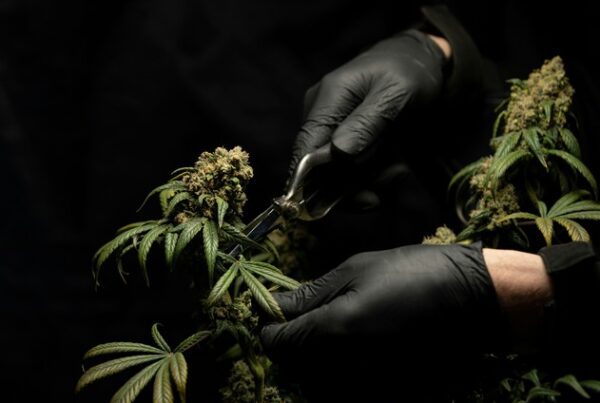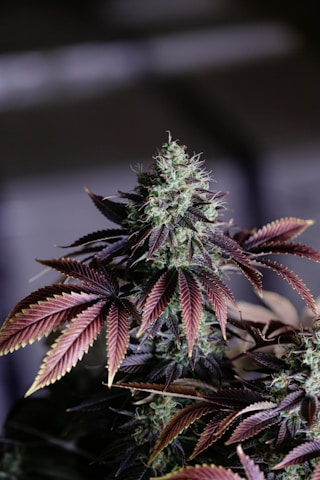Maximizing Cannabis Yield with Feminized Seeds

Achieve Stunning Results with Feminized Seeds for Your Cannabis Garden
Discover the key to achieving stunning results in your cannabis garden with feminized seeds. As more and more growers seek to maximize yield and potency, feminized seeds have become a game-changer in the world of cannabis cultivation. By ensuring that each seed will grow into a female plant, eliminating the need to remove male plants, feminized seeds simplify the growing process and guarantee a bountiful harvest of potent buds. Whether you’re a novice or experienced grower, incorporating feminized seeds into your cultivation practices can elevate your results to new heights. Join the revolution in cannabis cultivation and unlock the full potential of your garden with feminized seeds.
Understanding the Science Behind Feminized Seeds
Feminized seeds are genetically engineered to produce only female plants, eliminating the need for pollination and resulting in smokable buds without seeds. The key advantages of using feminized seeds over regular seeds include higher yield, consistency, efficiency, and time-saving. By eliminating the risk of male plants, feminized seeds ensure that all plants are productive females, maximizing the yield potential. Furthermore, the uniformity in growth and flowering among female plants provides consistency in the quality of the final product. Efficiency is improved as growers can focus resources on plants that will produce buds rather than seeds, ultimately saving time and effort. These advantages make feminized seeds a popular choice for cannabis growers seeking reliable and high-quality yields.
Creation of Feminized Seeds
Feminized seeds are created through a process called feminization, which involves manipulating the plant’s genetics to produce only female plants. This is achieved by inducing a female plant to produce pollen, which is then used to fertilize another female plant. The resulting seeds lack male chromosomes, ensuring that they will develop into female plants. This technique has revolutionized the cannabis industry by offering growers a reliable way to increase their yields and simplify the cultivation process.
Benefits of Using Feminized Seeds
One of the significant benefits of feminized seeds is their higher yield potential compared to regular seeds. Since all plants grown from feminized seeds are females, growers do not need to worry about removing male plants to prevent pollination. This not only saves time but also maximizes the available space for productive plants, leading to a more efficient use of resources. Additionally, the elimination of males reduces the risk of accidental pollination, which can significantly impact the quality and quantity of the final harvest.
In addition to higher yields, feminized seeds offer consistency in growth and flowering. With all plants being female, growers can expect uniformity in characteristics such as size, shape, and flowering time. This predictability allows for better planning and management of the cultivation cycle, resulting in a more streamlined and efficient operation. Moreover, the absence of male plants means that energy and nutrients are directed towards bud production, enhancing the overall quality of the final product.
Efficiency is another key advantage of using feminized seeds. By removing the need to identify and remove male plants, growers can allocate their resources more effectively. This targeted approach not only saves time and labor but also reduces the risk of errors during the cultivation process. Growers can focus on nurturing and optimizing the growth of female plants, leading to healthier crops and ultimately, a higher return on investment.
The science behind feminized seeds offers cannabis growers a sustainable and efficient way to cultivate high-quality crops. Through genetic manipulation and selective breeding, feminized seeds provide a solution to common challenges faced in traditional cultivation methods. By harnessing the power of feminization, growers can enjoy increased yields, consistent quality, and streamlined operations, making feminized seeds a valuable asset in the ever-evolving cannabis industry.
Selecting the Perfect Feminized Seeds
When selecting the perfect feminized seeds for cultivation, growers must carefully consider various factors to ensure a successful and satisfying harvest. Factors to contemplate include the desired effects, strain type, grow environment, difficulty level, yield potential, and flowering time of the seeds. By aligning these factors with personal preferences and growing conditions, growers can optimize their cultivation experience and yield.
Reputable Source for Feminized Seeds
One reputable source for top-quality feminized seeds is the Original Johnny Seed Bank, which offers a diverse selection of strains tailored for successful cultivation. These strains boast unique features, effects, and growing requirements, catering to a wide range of preferences and environments. Whether growers are cultivating indoors or outdoors, there are strains available at Original Johnny Seed Bank that can meet their specific needs and preferences.
Effects and Strain Type
By selecting feminized seeds that align with their cultivation goals and environment, growers can set themselves up for a rewarding harvest with impressive yield potential and desirable effects. Investing time in researching and choosing the right seeds can make a significant difference in the success of the cultivation process.
When it comes to choosing feminized seeds, it is crucial to understand the effects each strain offers. Whether you seek seeds for relaxation, creativity, pain relief, or other specific effects, selecting a strain tailored to your desired outcome is essential. Original Johnny Seed Bank provides detailed descriptions of each strain’s effects, helping growers make informed decisions based on their preferences.
Additionally, considering the strain type is vital for successful cultivation. indica-dominant strains are known for their relaxing effects, while sativa-dominant strains are more energizing. Hybrid strains combine the best of both worlds, offering a balanced experience. Understanding the characteristics of each strain type can guide growers in selecting seeds that align with their desired effects.
Grow Environment and Difficulty Level
The grow environment plays a significant role in the cultivation process. Growers must choose seeds suitable for their specific environment, whether it’s an indoor grow room, outdoor garden, or greenhouse. Original Johnny Seed Bank offers strains that thrive in various environments, providing options for growers with different setups.
Considering the difficulty level of cultivation is also crucial. Some strains require more attention and care, making them better suited for experienced growers, while others are beginner-friendly. By assessing the difficulty level of each strain, growers can select seeds that match their skill level and experience.
Yield Potential and Flowering Time
Yield potential is another important factor to consider when selecting feminized seeds. Growers looking for high yields should choose strains known for their productivity. Original Johnny Seed Bank’s selection includes high-yielding strains that can satisfy growers aiming for abundant harvests.
Flowering time is a consideration that impacts the overall cultivation timeline. Some strains have shorter flowering periods, ideal for growers seeking quicker harvests, while others have longer flowering times but offer unique qualities. By understanding the flowering time of each strain, growers can plan their cultivation schedule effectively.
Conclusion
Selecting the perfect feminized seeds involves a thoughtful analysis of various factors to ensure a successful cultivation experience. By choosing strains that align with desired effects, strain type, grow environment, difficulty level, yield potential, and flowering time, growers can set the stage for a rewarding harvest. Original Johnny Seed Bank’s diverse selection of top-quality feminized seeds caters to growers with different preferences and environments, offering a range of options for successful cultivation.
Cultivating Healthy Plants from Feminized Seeds
Proper Techniques for Planting Feminized Seeds
- Choosing the Right Soil Mix
- Planting at the Correct Depth
- Providing Adequate Water and Light
- Maintaining Proper Temperature and Humidity
Essential Care Guidelines During Growth Phases
- Monitoring Growth and Development
- Pruning and Training for Optimal Growth
- Nutrient Feeding Schedule
- Pest and Disease Prevention
Cultivating healthy plants from feminized seeds requires attention to detail and consistency throughout the growth process. By following proper planting techniques and essential care guidelines, you can ensure the successful growth of your plants and maximize their potential yield.
Proper Techniques for Planting Feminized Seeds
Choosing the Right Soil Mix Selecting the appropriate soil mix is crucial for the successful germination and growth of feminized seeds. A well-draining, nutrient-rich soil blend with a pH level suitable for the specific plant species is essential. Avoid heavy soils that may hinder root development and opt for a light, airy mix that promotes healthy growth.
Planting at the Correct Depth Proper seed depth is vital to ensure that the seed receives adequate moisture and access to light for germination. Most seeds require planting at a depth of approximately twice their size. However, it is essential to refer to the specific planting instructions provided by the seed supplier for optimal results.
Providing Adequate Water and Light Watering and lighting are critical factors in the early stages of plant growth. Ensure that the soil remains consistently moist but not waterlogged to prevent seed rot. Additionally, provide sufficient light exposure based on the plant’s requirements to support photosynthesis and healthy development.
Maintaining Proper Temperature and Humidity temperature and humidity levels play a significant role in seed germination and subsequent plant growth. Maintain a stable environment within the recommended range for your plant species. Fluctuations in temperature and humidity can stress the plants and impact their overall health and productivity.
Essential Care Guidelines During Growth Phases
Monitoring Growth and Development Regularly monitor the growth and development of your plants to identify any issues promptly. Keep track of key indicators such as leaf color, size, and overall plant vigor to make informed decisions regarding care and adjustments.
Pruning and Training for Optimal Growth Pruning and training techniques can help shape the plant, promote better airflow, and optimize light penetration. Remove any dead or damaged foliage and consider techniques such as topping or low-stress training to encourage lateral growth and maximize yield potential.
Nutrient Feeding Schedule Establishing a balanced nutrient feeding schedule is essential for providing your plants with the necessary elements for healthy growth. Consider using organic or synthetic fertilizers based on your preferences and closely follow the recommended dosages to prevent nutrient deficiencies or excesses.
Pest and Disease Prevention Implement proactive measures to prevent common pests and diseases that can affect plant health. Regularly inspect your plants for signs of infestation or infection, and consider using natural remedies or pesticides as needed to protect your crop.
Cultivating healthy plants from feminized seeds requires a combination of proper planting techniques and diligent care throughout the growth phases. By following the guidelines outlined above and staying attentive to your plants’ needs, you can create an optimal environment for robust growth and bountiful harvests.
Optimizing Growing Conditions for Maximum Yield
Effective Management of Light, Water, and Nutrients
Achieving maximum yield in your crops heavily relies on the effective management of essential resources such as light, water, and nutrients. Here are some key strategies to optimize growing conditions:.
- Light : Ensure your plants receive adequate sunlight by placing them in areas with direct sunlight exposure. Consider using grow lights for indoor plants to supplement natural light. Different plants have varying light requirements, so it’s crucial to understand the needs of each species. Rotate plants if necessary to ensure all receive equal light exposure.
- Water : Proper watering is crucial for plant health. Avoid overwatering or underwatering by understanding the specific water requirements of each plant species. Consider using drip irrigation systems for efficient water delivery and to prevent water wastage. Mulching can also help retain soil moisture and reduce evaporation.
- Nutrients : Providing the right balance of nutrients is essential for plant growth. Conduct soil tests to determine nutrient deficiencies and supplement with organic fertilizers or compost. Consider using slow-release fertilizers to ensure a steady supply of nutrients over time. Additionally, foliar feeding can be beneficial for quick nutrient uptake.
Preventing and Managing Pests and Diseases
Pests and diseases can significantly impact crop yield if left unchecked. Here are some methods to prevent and manage common issues:.
- Integrated Pest Management (IPM) : Implement IPM strategies such as crop rotation, companion planting, and biological controls to minimize pest populations. Encouraging natural predators like ladybugs can help control pest populations naturally.
- Regular Inspections : Routinely inspect your plants for any signs of pests or diseases. Early detection allows for timely intervention and prevents further spread. Consider setting up pheromone traps to monitor pest activity and take preventive measures.
- Organic Remedies : Utilize organic remedies like neem oil, diatomaceous earth, or homemade insecticidal soaps to control pests without harming beneficial insects. Beneficial nematodes can also be used to target specific soil-borne pests effectively.
By implementing these practices and staying proactive in your approach, you can optimize growing conditions, mitigate pest and disease risks, and ultimately promote maximum yield in your crops.
Harvesting and Post-Harvest Care
Recognizing Signs of Readiness for Harvesting
- Visual Cues: Looking for changes in color, size, and texture of the produce.
- Texture Check: Gentle squeezing to determine firmness.
- Smell Test: Checking for the characteristic aroma of ripe produce.
Post-Harvest Handling
- Gentle Handling: Avoiding bruising or damaging the produce during harvesting.
- Cleaning: Removing dirt and debris to prevent contamination.
- Sorting: Separating damaged or overripe produce from the rest.
Curing Methods
- Curing for Root Vegetables: Allowing proper drying time to enhance flavor and storage life.
- Curing for Fruits: Using controlled environments to ripen fruits if needed.
- Curing for Herbs: Properly drying herbs to preserve flavor and aroma.
Proper harvesting and post-harvest care are essential to maintain the quality and freshness of produce. By recognizing signs of readiness, handling produce with care, and applying appropriate curing methods, you can ensure a bountiful harvest and enjoy your homegrown produce for longer.
Additional Information: Enhancing Post-Harvest Practices.
- Storage Techniques: Utilize appropriate storage methods like refrigeration, root cellars, or drying for long-term preservation.
- Packaging: Opt for breathable packaging to extend the shelf life of fruits and vegetables.
- Quality Assessment: Regularly check stored produce for any signs of spoilage to remove them promptly.
Importance of Post-Harvest Care.
Proper post-harvest care not only ensures the longevity of your harvest but also contributes to food safety and quality. By following best practices in handling, storing, and processing your produce, you can minimize waste and maximize the nutritional value of your homegrown fruits and vegetables.
Community Engagement.
Consider sharing your surplus harvest with neighbors, friends, or local food banks to reduce food waste and contribute to your community’s well-being. Engaging in food-sharing initiatives fosters a sense of camaraderie and promotes sustainable practices within your neighborhood.
Continual Learning.
Stay informed about the latest advancements in post-harvest technologies and techniques to improve your harvest outcomes. Attend workshops, webinars, or join gardening communities to exchange knowledge and experiences with fellow enthusiasts.
Conclusion.
Harvesting and post-harvest care require attention to detail and a commitment to sustainable practices. By honing your skills in recognizing readiness, handling produce with care, and implementing effective curing methods, you can savor the fruits of your labor and contribute to a greener, more resilient food system.
Conclusion
Incorporating feminized seeds into your cannabis garden can lead to more predictable and higher-quality yields. By ensuring that each seed has the potential to produce a female plant, growers can eliminate the risk of wasted resources and maximize their harvest. With the convenience and benefits that feminized seeds offer, both novice and experienced cultivators alike can achieve stunning results in their cannabis gardens.









